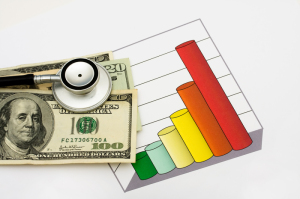AI in medical imaging to top $2 billion by 2023: Signify Research
by
Thomas Dworetzky, Contributing Reporter | August 06, 2018

Through software for automated detection, quantification, decision support and diagnosis, machine learning is making major inroads into medical imaging. The way things are going, the market is likely to top $2 billion by 2023, according to a new Signify Research market report.
Despite years of seemingly relentless hype, it's “becoming increasingly clear that AI will transform the diagnostic imaging industry, both in terms of enhanced productivity, increased diagnostic accuracy, more personalized treatment planning, and ultimately, improved clinical outcomes,” noted the report.
With its future key role in letting radiologists handle the ever-growing volume of diagnostic imaging data, the issue of investing in the “right” software will remain a challenge.
“Many of the AI-based solutions for medical imaging that are coming to market are positioned as workflow productivity tools, but there is often a lack of clinical validation to show how much time these tools actually save and their real impact on how radiologists work,” Signify analyst and study author Simon Harris told HCB News, noting that, “similarly, there are few large-scale clinical studies on the accuracy of quantitative tools that provide automatic measurements of image features, such as the long and short measurements of lung nodules, and the variability of the results obtained from tools from different vendors.”
Harris advised healthcare providers interested in making an AI investment “to look for vendors who have invested in clinical studies and are able to provide robust clinical evidence to back up their marketing claims.”
The study noted that the development pace “is faster than ever before,” and is leading to a surge in products from more vendors.
"The interest and enthusiasm for AI in the radiologist community has notably increased over the last 12 to 18 months, and the discussion has moved on from AI as a threat, to how AI will augment radiologists,” suggested Harris, adding, “At the same time, there are emerging clinical applications where the use of AI has been shown to both improve clinical outcomes and deliver a return on investment for healthcare providers. Examples include software to detect and diagnose stroke, and analysis tools to measure blood flow in noninvasive coronary exams.”
Still in its innovator and early adopter phase, AI for medical imaging faces several challenges, including a regulatory process that has been slow to approve products and a lack of large-scale studies to illustrate that deep learning algorithms works in real-world clinical settings.
|
|
|
You Must Be Logged In To Post A Comment
|
